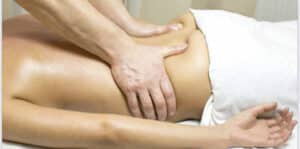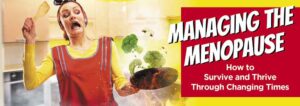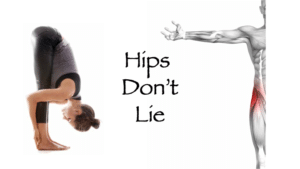If you’re one of the 47% of the global population who experiences regular headaches, you’ll know they’re no laughing matter. For some people, they’re just a minor inconvenience, for others they can be utterly debilitating, condemning you to a dark, quiet room for hours, and sometimes even days.
The trouble is that successfully diagnosing a headache gets complicated, because more than 130 distinct disorders have been identified along with over 300 triggers, which makes a headache almost as unique as an individual.
Serious causes, like aneurisms, menigitis or malignancy like chordoma are rare, but check with your doctor if any of these symptoms are present:
* Your worst ever headache / different headache to your usual
* A sudden change in headache type or pattern/intensity
* History of cancer
* During or following pregnancy
* Headache at night or waking in the morning
* Exertion triggers it (eg. exercise, cough, sneeze or sex)
* Age is greater than 50 years
* Despite treatment, your headache persists
* Acute onset ie. comes on very quickly
* Central nervous system findings (eg. weakness, memory loss, slurred speech)
* HIV or other immune system compromise
 * Fever or other systemic symptoms (eg. unexplained weight loss, high temperatures, rash).
* Fever or other systemic symptoms (eg. unexplained weight loss, high temperatures, rash).
Fortunately, the vast majority of headaches do not require urgent medical investigation and should respond positively to treatment depending upon an accurate diagnosis.
Not necessarily just one headache!
 You can also simultaneously suffer one, two or more types of headache or a migraine at the same time, where one may cause another, or overlap with each other. These are known as mixed or multi-source headaches and can take longer to resolve as your therapist works through treating the different causes. For example, a dysfunctional painful neck can cause an increase in surrounding muscle spasm, which will increase your blood pressure. In this scenario, you could have a cervicogenic (neck) headache, with a tension headache and a resultant migraine!
You can also simultaneously suffer one, two or more types of headache or a migraine at the same time, where one may cause another, or overlap with each other. These are known as mixed or multi-source headaches and can take longer to resolve as your therapist works through treating the different causes. For example, a dysfunctional painful neck can cause an increase in surrounding muscle spasm, which will increase your blood pressure. In this scenario, you could have a cervicogenic (neck) headache, with a tension headache and a resultant migraine!
4 Main Types of Headache
 The most commonly diagnosed headaches are:
The most commonly diagnosed headaches are:
- Migraines (12%)
- Tension headache (75%)
- Cervicogenic headache (originating from the neck) (18%)
- Sinus headaches
If you only suffer from the occasional headache, this is often caused by lifestyle factors such as:
- Dehydration
- Stress
- Alcohol
- Caffeine
- Some foods
- Skipped meals
- Lack of sleep
- Posture
- Muscular tension
- Medications
- High blood pressure
- Infection
- Hormonal influences
However, if you suffer from headaches more regularly, there is some good news, because two of the most common headaches, tension-type headaches and cervicogenic headaches (which originate from musculoskeletal issues in and around the neck) can be significantly improved, and even cured by massage and physical therapy, both in the short term, as well as the long term.
Physical Therapy and Massage for Headaches
 There is a robust body of research, as well as clinical evidence, showing that physical therapy is an extremely effective treatment for certain types of headache (some research available at the bottom of this article).
There is a robust body of research, as well as clinical evidence, showing that physical therapy is an extremely effective treatment for certain types of headache (some research available at the bottom of this article).
Manual, hands-on therapy manipulating or mobilising your neck can be hugely beneficial in eliminating your headache; or at least reducing the intensity and duration of the headache.
 Soft tissue work including trigger point therapy and massage, can be effective in relieving spasm in the head and neck muscles which may contribute to your headache. Massage has also been shown to help people cope better during headache episodes, reducing associated stress and anxiety.
Soft tissue work including trigger point therapy and massage, can be effective in relieving spasm in the head and neck muscles which may contribute to your headache. Massage has also been shown to help people cope better during headache episodes, reducing associated stress and anxiety.
Acupuncture, laser and ultrasound are additional therapies that could help with neck or cervicogenic headaches, and sinus headaches.
In addition, poor posture and repetitive movements in your daily life, have also been shown to increase the risk of experiencing headaches as they can cause muscle imbalances, muscle weakness and strain the ligaments and soft tissues in the joints of your neck. In these cases corrective exercises to strengthen weak muscles and stretch tight muscles can be extremely effective.
 Martin has some more downloadable resources and advice sheets on each specific headache type in his Rescource Library, available if you subscribe to his Email Newsletter at the bottom of this page.
Martin has some more downloadable resources and advice sheets on each specific headache type in his Rescource Library, available if you subscribe to his Email Newsletter at the bottom of this page.
If you would like to understand more about how he can help in the treatment and prevention of headaches, please don’t hesitate to contact him directly.
Martin Kingston
07710 314432
Research
Help and Support
National Migraine Centre (charity) https://www.nationalmigrainecentre.org.uk/
Stroke Association: Migraine & Stroke leaflet at https://www.stroke.org.uk/sites/default/files/migraine_and_stroke.pdf
Other resources
Free Booklet from Brain & Spine Foundation: Headaches available at https://www.brainandspine.org.uk/our-publications/booklets/headache/
Chordoma Foundation https://www.chordomafoundation.org






